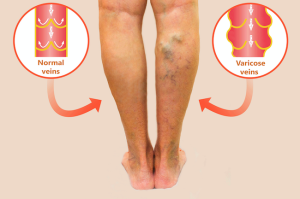-
Emerging tech: Using sonar to treat deep vein thrombosis
Posted on August 16, 2017 by Vein Admin in dr joseph magnant, varicose veins A new surgical tool has been developed that could prove useful in the treatment of deep vein thrombosis (DVT), or clotting of the blood in deep veins that typically shows up in the legs.
A new surgical tool has been developed that could prove useful in the treatment of deep vein thrombosis (DVT), or clotting of the blood in deep veins that typically shows up in the legs. Researchers at North Carolina State University and the University of North Carolina at Chapel Hill announced earlier this summer that they’ve created a device that uses low-frequency, intravascular ultrasound to target blood clots that cause deep vein thrombosis.
DVT can be uncomfortable and symptoms include swelling, redness and leg pain. It requires a medical diagnosis, and doctors report that there are 200,000 new cases in America each year.
The technology uses an ultrasonic “drill” to eliminate blood blots, allowing for greater accuracy and the promise of reduced treatment times. It’s worth noting that the technology has only been used in synthetic blood vessels so far, meaning its use as a medically approved treatment could take a few years.
The current crop of intravascular ultrasound tools used to clear blood clots employ lateral sound waves or waves that travel from side to side. They present challenges for medical professionals, and can even damage surrounding blood vessels. Another form of treatment employs a diamond-tipped drill to eliminate clots, and while it’s more precise than lateral sound waves, it requires a higher dose of blood thinner.
The new ultrasound device is forward-facing like a drill and breaks down clots into fine particles without relying on high doses of blood thinner.
In a synthetic blood vessel using cow’s blood, researchers were able to dissolve 90 percent of a blood clot in 3.5 to 4 hours without using any blood thinners. That’s more than twice as fast as a procedure that uses conventional ultrasound and blood thinners.
The researchers are currently securing funding to move forward with trials in animals, and have filed a patent on the technology while looking for industry partners to help develop the device.
The results were reported in a study that appeared online in the journal Scientific Reports.
For a vein specialist referral, or for more information on vein disorders and treatments, visit http://www.eVeinScreening.com.





